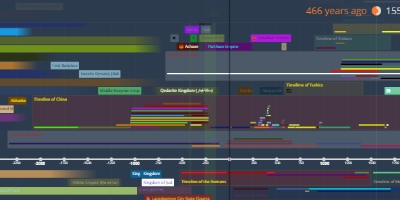Sui dynasty (隋) (mar 4, 581 – may 23, 618)
Description:
The Sui dynasty ([swěi], Chinese: 隋朝; pinyin: Suí cháo) was a short-lived imperial dynasty of China of pivotal significance (581-618). The Sui unified the Northern and Southern dynasties and reinstalled the rule of ethnic Han in the entirety of China proper[citation needed], along with sinicization of former nomadic ethnic minorities (Five Barbarians) within its territory. It was succeeded by the Tang dynasty, which largely inherited its foundation.Founded by Emperor Wen of Sui, the Sui dynasty capital was Chang'an (which was renamed Daxing, modern Xi'an, Shaanxi) from 581–605 and later Luoyang (605–618). Emperors Wen and his successor Yang undertook various centralized reforms, most notably the equal-field system, intended to reduce economic inequality and improve agricultural productivity; the institution of the Five Departments and Six Board (五省六曹 or 五省六部) system, which is a predecessor of Three Departments and Six Ministries system; and the standardization and re-unification of the coinage. They also spread and encouraged Buddhism throughout the empire. By the middle of the dynasty, the newly unified empire entered a golden age of prosperity with vast agricultural surplus that supported rapid population growth.
After a series of costly and disastrous military campaigns against Goguryeo, one of the Three Kingdoms of Korea, ended in defeat by 614, the dynasty disintegrated under a series of popular revolts culminating in the assassination of Emperor Yang by his minister, Yuwen Huaji in 618. The dynasty, which lasted only thirty-seven years, was undermined by ambitious wars and construction projects, which overstretched its resources. Particularly, under Emperor Yang, heavy taxation and compulsory labor duties would eventually induce widespread revolts and brief civil war following the fall of the dynasty.
The dynasty is often compared to the earlier Qin dynasty for unifying China after prolonged division. Wide-ranging reforms and construction projects were undertaken to consolidate the newly unified state, with long-lasting influences beyond their short dynastic reigns.
Added to timeline:
Date:
mar 4, 581
may 23, 618
~ 37 years
